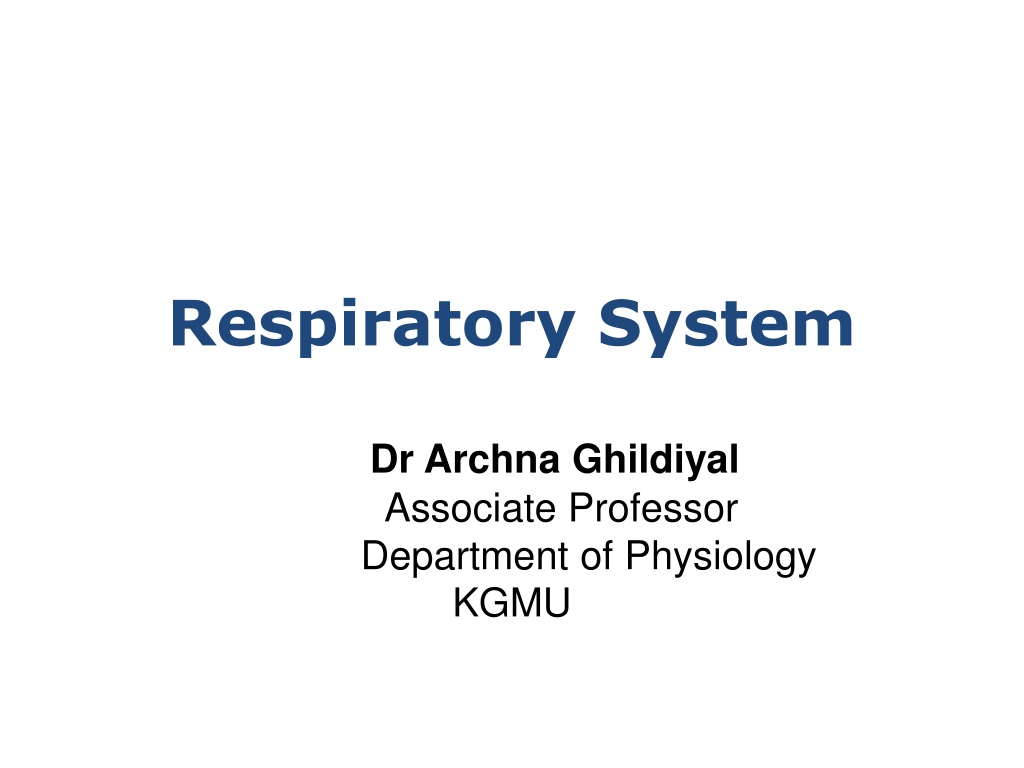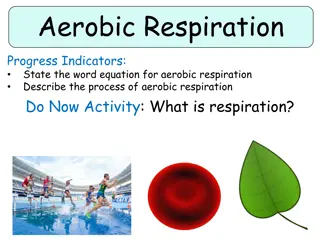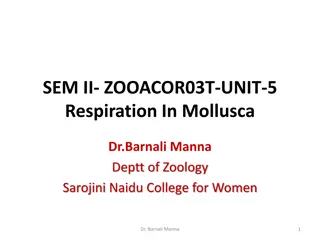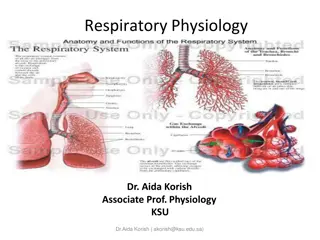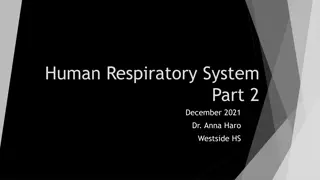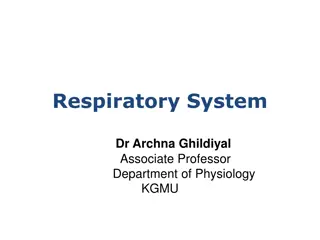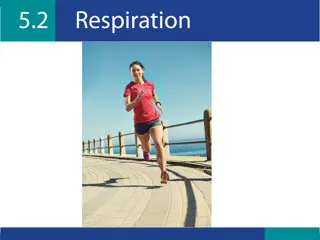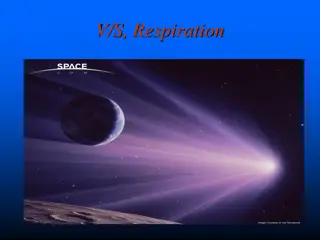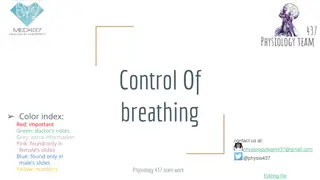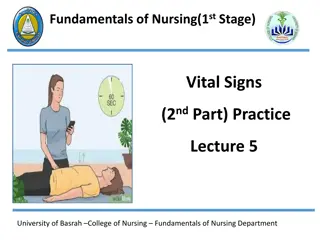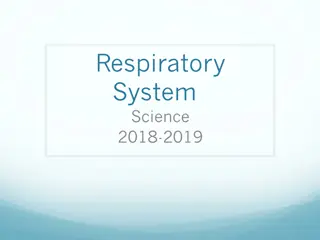Understanding Neural Control of Respiration in the Respiratory System
Explore the intricate mechanisms of neural control of respiration within the respiratory system, focusing on key components such as the respiratory center in the medulla and the role of inspiratory ramp signals in regulating breathing rhythms. Gain insights into the automatic and voluntary aspects of respiration and the function of various neuronal groups in maintaining normal breathing patterns.
Download Presentation

Please find below an Image/Link to download the presentation.
The content on the website is provided AS IS for your information and personal use only. It may not be sold, licensed, or shared on other websites without obtaining consent from the author. Download presentation by click this link. If you encounter any issues during the download, it is possible that the publisher has removed the file from their server.
E N D
Presentation Transcript
Respiratory System Dr Archna Ghildiyal Associate Professor Department of Physiology KGMU
LECTURE:8 Contents Regulation of Respiration: Neural Group of Neurons controlling Respiration Breathing rhythm: Ramp Signals Lung Receptors
Learning Objectives NeuralControl of Respiration : - Automatic -Voluntary I & E Neurones Inspiratory Ramp Signal Pre-Botzinger Complex Lung Receptors
Neural Control of Respiration Breathing Automatic/Spontaneous Voluntary
Groups of Neurons in the Respiratory Center In medulla Dorsal respiratory group Ventral respiratory group In Pons Pneumotaxic center Apneustic Center?
Dorsal Respiratory Group(DRG) Most neurons located within NTS, some in adjacent reticular substance of medulla Normal quiet breathing: Repititive Inspiratory signals from DRG Controls Inspiration Respiratory rhythm
Inspiratory Ramp Signals Rhythmical Inspiratory discharge from DRG Nervous signal that is transmitted to the inspiratory muscles, mainly the diaphragm Begins weakly & increases steadily for about 2 secs in normal respiration (inspiration) Then ceases abruptly for approx next 3 secs (expiration)
Control of Inspiratory Ramp 1.Control of the rate of increase of the ramp signal rate of ramp signal - ramp increases rapidly - fills the lungs rapidly 2.Control of the limiting point at which the ramp suddenly ceases Usual method for controlling the rate of respiration; shortens the duration of Inspiration & Expiration( frequency of respiration )
Contd Stopping the Ramp Shortens the rate of inspiration and expiration Increasing the frequency of respiration
Pneumotaxic center (upper pons) Located dorsally in upper pons,in N.parabrachialis Sends continual inhibitory impulses to inspiratory center Ramp controls stopping point of DRG Inhibits I neurons Switch breathing from inspiration to expiration
Contd As impulse frequency rises: Faster and Shallower Breathing Damage to Pneumotaxic center : Results in increased depth of inspiration
Ventral respiratory group(VRG) Located in ventrolateral part of medulla,in N.ambigues & N.retroambigues Functions in both Inspiration & Expiration Remain inactive during normal quite respiration
Contd Act as Overdrive mechanism (as in heavy exercise) Powerful expiratory signals to internal intercostal & abdominal muscles
Pre-Btzinger Complex Cluster of interneurons in the ventrolateral medulla of the Brainstem Contains Pace maker Cells- Spontaneous Breathing
Apneustic Center (Lower Pons) Role not clear Stimulation causes Apneusis( pause at full inspiration) Integrates inspiratory cut-off information
Mechanism of Rhythmic Ventilation Medullary respiratory center neurons are continuously active (spontaneous/automatic breathing) Combined input from all sources (receptors,brain) causes action potentials to stimulate respiratory muscles
To Increase Inspiration More and more neurons get activated To Stop Inspiration Neurons receive input from pontine group and stretch receptors in lungs Inhibitory neurons activated , cause Inspiratory switch-off , Start of expiration Effect: Relaxation of Inspiratory muscles
Voluntary control Provided via the Cerebral Cortex Modulate the activity of controlling centers in the medulla and pons Allow the rate and depth of respiration to be controlled During speaking, laughing, crying, eating, defecating, coughing, and sneezing
Contd Chemoreceptor reflex is capable of overriding it. Conscious control of respiratory neuronal networks in the reticular formation can effect other basic functions regulated by the brainstem(Yogic exercises)
Contd Stimulation of the reticular activating system of the brainstem (RAS):Stimulates Ventilation Sleep: Ventilation
Peripheral receptors Chemoreceptors Pulmonary irritant receptors-on stimulation cause coughing,sneezing,bronchial constriction Lung J Receptors Hering-Breuer inflation reflex
Lung J Receptors Indian Physiologist Prof A S Paintal Location:Sensory nerve endings in alveolar walls in juxtaposition to pulmonary capillaries Stimulus: Severe exercise, Engorged capillaries,Pulmonary oedema Effect:Tachypnea,Hypotention,Bradycardia
J-Reflex Stimulation (severe exercise) Inhibition of gama motor neurons supplying muscle spindle Muscle Tone Muscle Weakness & Stoppage of Exercise
Hering- Breuer Inflation Reflex Protective reflex Lung inflation signals limit inspiration Stretch Receptors: In Muscular Walls Of Bronchi & Bronchioles Active when Tidal volume > 1.5 liters/breath Inspiratory ramp : Switches off
References John E. Hall.Guyton & Hall Text book of Medical Physiology. A south Asian ed: New Delhi: Elsevier.2013.p. 364-373 Kim E. Barrett, Heddwen L. Brooks, Scott Boitano, Susan M. Barman.ed:23rd Ganong s Review of Medical Physiology:Mc Graw Hill http://meded.ucsd.edu/ifp/jwest/resp_phys/ student_files.html
Question:1 Respiratory control centers are located in the : A) Midbrain and Medulla B) Medulla and Pons C) Pons and Midbrain D) Upper Spinal Cord and Medulla
Question:2 Damage to Pneumotaxic center results in: A) Decreased depth of Inspiration B) Increased depth of Inspiration C) Increased depth of Expiration D) Decreased depth of Expiration
Question:3 Stimulation of the reticular activating system of the brainstem (RAS) plays what role in ventilation? A) Stimulates ventilation B) Inhibits ventilation C) Stimulates inhalation but inhibits exhalation (apneustic breathing) D) Stimulates exhalation but inhibits inhalation
Question:4 Destruction of which part abolishes automatic respiration? A) Pre-Botzinger complex B) Ventral group of respiratory neurons C) Dorsal group of respiratory neurons D) Section at the inferior border of the pons
Question:5 Which of the following statement is true? A) Hering Breuer inflation reflex respond to lung distension by increasing frequency of respiration. B) Irritant receptors respond to noxious gases by reflex bronchodilatation C) J receptors respond to pulmonary capillary congestion by rapid shallow breathing D) DRG neurons initiate expiration
Answers 1-B 2-B 3- A 4- A 5-C
